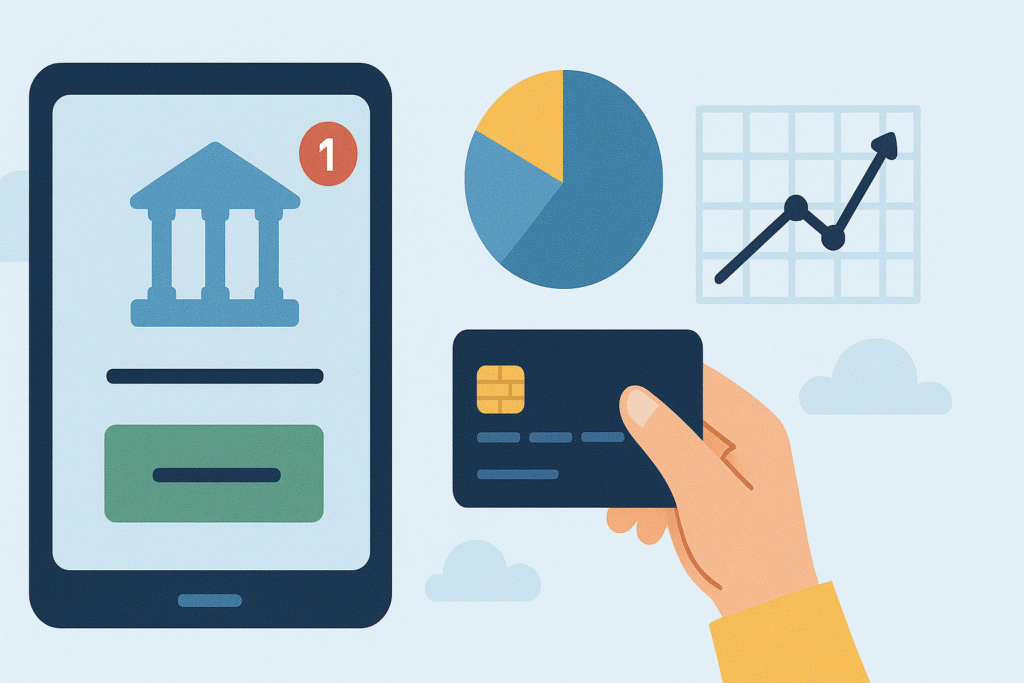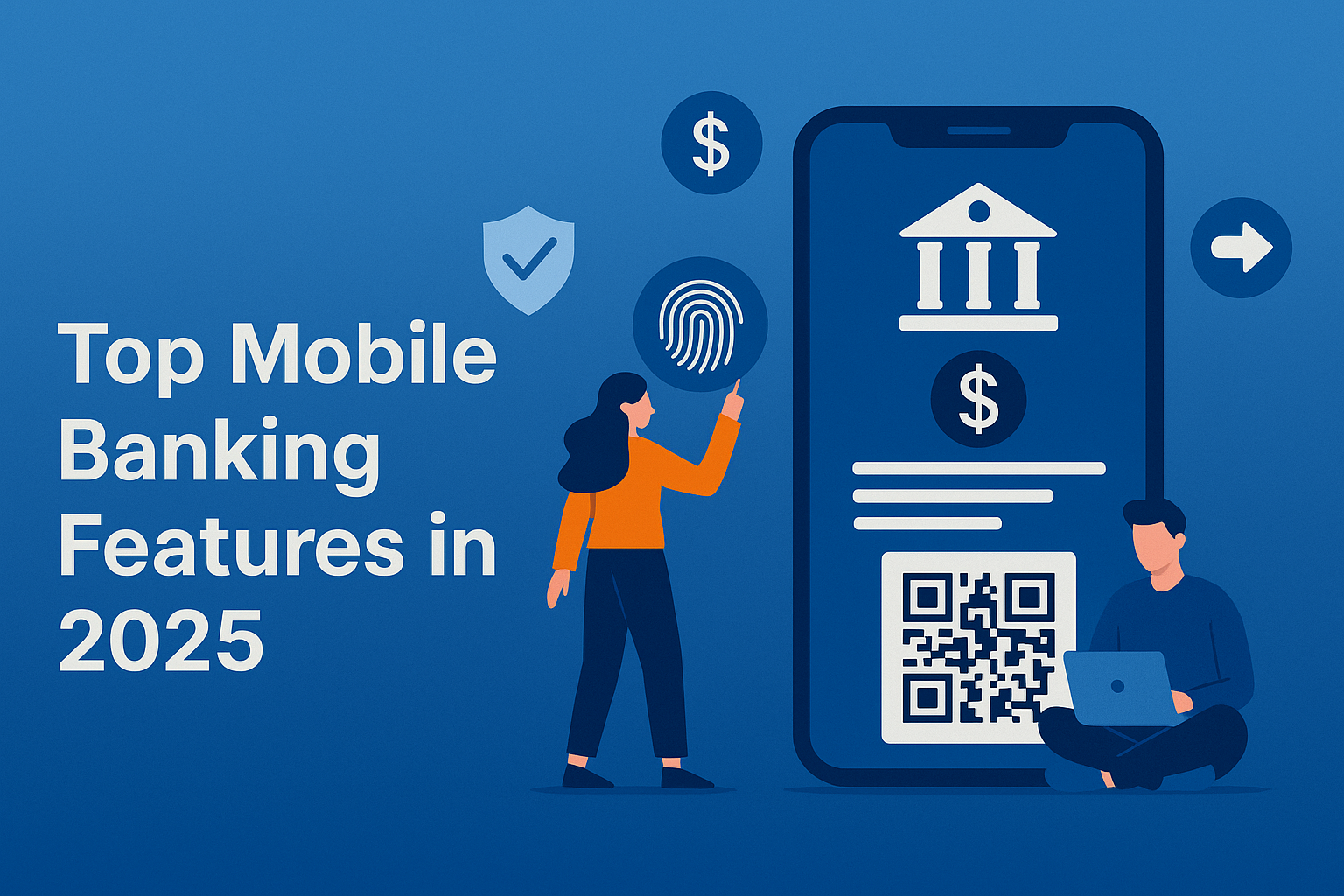Digital banking is transforming the way we manage our finances. It has evolved from traditional banking to provide more convenience, security, and features tailored to meet the demands of the modern world. In this fast-paced environment, customer expectations in digital banking are higher than ever. Understanding its core components and differentiating it from online banking is crucial for consumers looking to leverage these tools.
At the heart of digital banking are systems that enable cloud readiness, scalability, and open banking compliance. With innovations like AI and machine learning, neobanks and challenger banks are leading the charge in offering seamless experiences. These advancements allow consumers to access banking services with greater flexibility and ease.
This simple guide will navigate the basics of digital banking, explore key trends and technologies, and discuss how modern financial tools are reshaping the industry. From core systems to mobile app development, we’ll cover strategies for digital transformation, providing a comprehensive overview for beginners eager to embrace the future of finance.
Understanding Digital Banking
Digital banking is reshaping how financial institutions operate in the modern world. By leveraging advanced digital tools like web-based services and APIs, banks enhance their operations with increased cost efficiency, security, and flexibility. Unlike traditional banks, digital platforms allow quick feature rollouts, meeting the ever-growing customer expectations for swift and convenient services.
Definition of Digital Banking
Digital banking signifies the complete transition of banking transactions and services to internet-based platforms. It encompasses activities like setting up accounts, fund transfers, and withdrawals, providing a seamless and comprehensive banking experience. While online banking is merely a part of it, digital banking offers a broader range of technological interactions, helping banks save on costs associated with physical branches. This digital system operates continuously, ensuring customers enjoy uninterrupted access to financial services around the clock.
Evolution from Traditional Banking
The shift from traditional banking to digital platforms highlights the dynamic nature of today’s banking industry. Initially marked by basic online account management, digital banking now supports a fully digital customer journey through real-time data and advanced analytics. Even as banking institutions close physical branches, they adapt by improving their digital offerings. This evolution is not just a trend but a necessary advancement to meet customer demand for faster, more secure financial transactions while maintaining a competitive edge in the banking sector.
Core Components of Digital Banking

Digital banking is reshaping the way customers interact with financial institutions. In today’s digital platform-driven environment, banks must integrate modern technologies to meet evolving customer expectations. This section will explore key aspects essential for creating robust digital banking solutions that enhance customer experiences and satisfaction.
Core Banking Systems
Core banking systems form the backbone of any digital banking platform. These systems enable banking institutions to process financial transactions efficiently, ensuring smooth and continuous operations. Financial services rely on robust core systems to provide accurate customer relationship management and timely customer engagement, allowing users to access various services seamlessly.
Cloud Readiness and Scalability
Cloud readiness is critical for banks aiming to scale their digital banking services. By leveraging cloud technologies, banks can enhance their digital platform’s scalability, enabling them to handle increased customer demand. This ensures that banking services remain efficient and responsive, regardless of fluctuations in customer interactions and transactions.
Open-Banking Compliance
Open-banking compliance allows third-party developers to access banking data securely through APIs, promoting innovation and competition. Financial institutions that comply with open-banking standards can introduce more personalized digital banking experiences. This fosters customer trust and satisfaction by offering a wider range of financial services tailored to individual needs.
API-First Strategies
An API-first strategy is crucial for modern digital banking solutions, emphasizing the development of APIs from the onset. This approach allows financial institutions to facilitate seamless integration with other digital tools and platforms. APIs enhance customer interactions by enabling customized solutions, integrating artificial intelligence, and improving overall customer satisfaction in the banking sector.
Digital vs. Online Banking
The evolution of the banking sector has introduced multiple digital platforms to meet customer expectations and adapt to technological changes. Digital banking and online banking, though often used interchangeably, have distinct characteristics. While both aim to enhance customer experiences through convenience and access, understanding their differences is crucial for making informed decisions about financial services.
Key Differences Explained
Digital banking encompasses a broader transformation, integrating all banking operations into a digital platform. It uses cutting-edge digital technologies like artificial intelligence and Blockchain Technology to provide a comprehensive range of banking services. Online banking, on the other hand, typically refers to conducting financial transactions over the internet, primarily through desktop and mobile apps. Traditional banks often offer online banking for simple tasks, but digital banking solutions can replicate most services of a physical branch. For a comprehensive comparison, read Neobank vs Traditional Bank: Understanding the Differences.
Benefits for Consumers
Both digital banking and online banking offer significant advantages, primarily focusing on customer satisfaction and engagement. Consumers enjoy 24/7 access to financial transactions, reducing their dependence on traditional banking hours. Moreover, mobile banking apps offer enhanced security features, ensuring customer data is protected against potential threats. These convenient digital banking experiences allow individuals to access diverse financial services using their mobile devices anytime, anywhere. This shift not only streamlines banking processes but also empowers consumers with more control over their finances, meeting evolving customer demands in the banking industry. For comprehensive financial education resources, explore the Global Financial Literacy Excellence Center (GFLEC), which offers tools to enhance financial decision-making worldwide.
Exploring Modern Digital Banks

Digital banks represent a significant evolution in the banking industry, leveraging cutting-edge digital technologies to enhance customer satisfaction and meet customer demand. Unlike traditional banks, these organizations operate primarily through digital platforms, eliminating the need for a physical branch. This shift facilitates customer engagement, allowing users to conduct financial transactions seamlessly through mobile devices. By integrating artificial intelligence and Blockchain Technology, digital banking services offer enhanced security and innovative customer experiences, reshaping what consumers expect from financial institutions.
Neobanks and Challenger Banks
Neobanks and challenger banks are revolutionary financial institutions that operate without the old-fashioned constraints of traditional banking. These digital banking solutions are designed to cater directly to tech-savvy consumers through intuitive mobile apps and digital tools. Often, they focus on niche markets, exploiting the lack of flexibility in traditional banks. Key features include real-time insights into financial transactions and streamlined customer relationship management to meet customer expectations efficiently.
Customer relationships are at the core of these digital banking platforms. These banks combine enhanced security with cutting-edge digital technologies, ensuring transactions are faster and more secure. Customer engagement is enhanced through user-friendly interfaces, providing a seamless banking experience. Digital platforms are constantly evolving to adapt to growing customer demand, further blurring the lines between conventional banking and new-age solutions. Discover the innovative features setting neobanks apart in our piece, Top Neobank Features to Watch in 2025.
Advantages to Consumers
Digital banking offers numerous benefits to consumers, making it an attractive alternative to traditional banking. Instant access to banking services via mobile devices allows customers to manage their finances from anywhere, at any time. Such convenience reduces the reliance on physical branches and offers financial services that align with modern lifestyles.
Additionally, digital banks often provide lower fees and higher interest rates compared to traditional banks. Enhanced security measures, such as biometric authentication and advanced encryption, protect customer data effectively. With real-time updates and personalized notifications, consumers stay informed and can make smarter financial decisions. The digital banking experience is tailored to meet consumer expectations, making it an indispensable part of today’s financial landscape.
Trends in Digital Banking Technology
Digital banking technology is revolutionizing the banking sector, transforming the way financial institutions operate and interact with customers. With the surge in customer demand for financial services that transcend traditional banking, digital platforms and tools have become essential. From mobile banking apps to blockchain technology, these innovations cater to customer expectations of instantaneous, secure, and convenient financial transactions. Enhanced security and customer engagement are crucial in this shifting landscape, creating digital banking experiences that meet modern demands. Discover how real-time payments are reshaping economies in the ACI Worldwide Real-Time Payments Report.
AI and Machine Learning
Artificial intelligence (AI) and machine learning (ML) are reshaping customer experiences in the banking industry by offering tailored financial services and enhanced security measures. These technologies help manage vast amounts of data, allowing banking institutions to predict customer behavior and streamline operations. AI-driven chatbots provide rapid responses, enhancing customer engagement by reducing wait times and improving customer relationship management. Financial institutions leverage machine learning to detect fraudulent activities, delivering enhanced security in real-time. For a closer look at emerging fintech companies leveraging AI and ML, explore our Top Fintech Startups to Watch in 2025.
Robotic Process Automation
Robotic Process Automation (RPA) is revolutionizing the efficiency of financial services by automating repetitive tasks within digital banking solutions. Financial institutions utilize RPA to simplify operations such as data entry, compliance checks, and transaction processing. This digital technology reduces human error and frees up resources, allowing for a stronger focus on customer satisfaction and digital banking experiences. Traditional banks and new digital banking platforms can manage customer expectations more effectively by integrating RPA into their systems.
Developing Mobile Banking Apps

In the rapidly evolving banking industry, developing mobile banking apps is crucial for enhancing customer experiences and meeting the demand for digital banking services. Financial institutions are leveraging digital banking platforms to offer seamless financial transactions and elevate customer satisfaction. These apps need to integrate intelligent digital tools like artificial intelligence to provide personalized financial services. Meeting customer expectations in this digital era requires a focus on usability, security, and adaptability across mobile devices.
Importance of Intuitive Design
An intuitive design is vital for the success of mobile banking apps. Customers expect a smooth and user-friendly experience comparable to traditional banking but with enhanced efficiency. By simplifying navigation, financial institutions can increase customer engagement and reduce frustration. An intuitive design ensures that complex banking services are easy to understand and manage, thus boosting overall user satisfaction. Clear, easy-to-navigate interfaces minimize customer support inquiries, allowing banking institutions to focus on enhancing their digital platform offerings.
Security Measures and Customer Focus
Security is a top priority for mobile banking apps to protect sensitive financial data and maintain customer trust. Enhanced security measures, such as biometric authentication and encryption, safeguard financial transactions against cyber threats. By prioritizing security, digital banking solutions can fulfill customer expectations and improve customer relationships. Additionally, a strong focus on security cultivates an environment of trust, which is essential for customer loyalty. Ultimately, the balance between robust security protocols and a customer-centric approach is the foundation for successful banking services in the digital age.
The Role of Open Banking
Open banking is revolutionizing the banking sector by allowing third-party financial service providers to access consumer banking, transactional, and other financial data through Application Programming Interfaces (APIs). This shift fosters innovation by encouraging the development of new digital banking solutions that cater to evolving customer expectations. As a result, traditional banks and financial institutions are increasingly integrating these solutions to enhance customer satisfaction and engagement. To understand how open banking is fostering innovation globally, refer to the Open Banking Global Initiatives for insights into worldwide developments.
Benefits and Challenges
Open banking offers numerous advantages for both consumers and financial institutions. One key benefit is the increased competition among banks, which drives the innovation of mobile banking apps and platforms, leading to improved customer experiences. Consumers gain access to personalized financial services tailored to their specific needs, enhancing ease of use and customer engagement.
However, open banking also presents significant challenges. Ensuring enhanced security and data privacy remains a top priority as more third-party providers gain access to sensitive financial information. Financial institutions must navigate complex regulations and develop robust digital technologies to protect data integrity. Despite these challenges, the integration of open banking into the digital banking landscape continues to transform financial transactions and reshape customer relationships. Delve deeper into how open banking is transforming financial services in our article, The Impact of Open Banking Benefits on Financial Services.
Strategies for Digital Transformation

Digital transformation in the banking sector is crucial for meeting evolving customer expectations and staying competitive. Rapid advancements in digital technologies have pushed traditional banks to integrate innovative solutions to enhance customer experiences. Financial institutions are implementing digital banking tools and embracing digital platforms to streamline operations and offer superior financial services. Prioritizing customer engagement and customer satisfaction is key in the digital era.
Approaches to Modernization
Adapting to the digital age requires a strategic approach to modernization. Banking institutions must leverage mobile banking apps and other digital banking solutions to meet customer demand for accessible and convenient services. These digital tools allow banks to extend their reach beyond physical branches, providing seamless financial transactions on mobile devices. Enhancing cybersecurity through technologies like Blockchain Technology further strengthens customer trust and loyalty.
Artificial intelligence plays a pivotal role in modernizing the banking industry. AI-driven tools can optimize customer relationship management, personalize services, and improve overall customer experiences. By harnessing digital banking services and AI, financial institutions can better understand and predict customer needs. This proactive approach not only fulfills customer expectations but also ensures that traditional banking evolves with technological advancements. Embracing digital transformation is essential for banking services to thrive in today’s competitive landscape, securing a prominent position within the digital banking platform ecosystem. For a comprehensive overview of countries developing Central Bank Digital Currencies, visit Investopedia’s guide on CBDCs.



